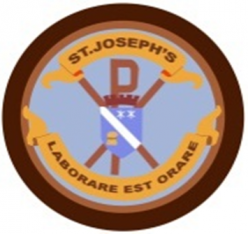Fantastic time had by all at the Titanic Museum. We were complimented by staff and members of the public for the outstanding behaviour and manners of the children. Super day. Well done boys and girls. 😊
Tag: Titanic
Beautiful Belfast!
We have arrived safely in Belfast and we’re having a ball so far!
Primary 4/5 classroom becomes a shipyard
This afternoon, Primary 4/5 were very busy designing ‘unsinkable’ boats. We were each given a 2l bottle (boat), 2 bottle ends (bulk heads) and enough weights to half submerge our boat in the water. We had to work together in our groups to find the best place for our watertight compartments and the best distribuation of weight.
Every group had to ensure that their boat was level in the water with the bottle top half submerged. When our hull was breached (bottle lid removed), we used ipads to time how long it took our ship to sink. Our results showed that ships sink faster with no bulkheads. We also discovered that if the there were too many weights at one end of the boat, it caused our breaced hull to rise above the water level giving us false results.
One group discovered that placing the bulkheads at either end of the ship with the weight evenly distributed was the most effective in allowing our boat to stay afloat.
Why did the Titanic sink?
Yesterday (Monday 20th March) Primary 5 were exploring these questions in some depth.
Firstly we came up with our own theories regarding the reasons(s) why the Titanic sank which included;
- the weight if it was balanced
- the mass and density of the Titanic made it float
- The turbines and propellers made it float by spinning
- it was made with enough density
- the funnels had air going out
- it was made of metal
- the shape of the metal allowed it to float
- there was a lot of air on the Titanic
- it was very spacious – air on board
- lots of hollow spaces
I am sure you will agree that Primary 5 really thought very hard at this and did very well at giving reasons and when questioned further were able to justify their reasons.
Today we had a guest in the class to help us answer this question and allowed us to have a deeper discussion and develop our understanding. They were all so engaged in the lesson and the questions that the class were asking were just fab!
Today we learned that the Titanic stayed afloat through buoyancy where the upward thrust of a force allowed it to float – when something is placed in water it will sink until it moves enough water to support it.
The reason the Titanic sank = it hit an iceberg and ripped a hole in its hull. water then poured into the hull and the ship became too heavy – there was not enough support or upward thrust to help it float.
Why did it sink diagonally and why did it snap?
- Think about a seesaw – more weight at one end will lift the other up, so one end of the Titanic came out of the water. The end that was in the water was filled with water and pulling the ship down. The end that was in the air did not have the support from the water and so became heavy (because it was made of metal) and therefore snapped.
Primary 5 really did a brilliant job today of digging deeper into these questions and have developed a good understanding of them now. Their questioning and reasoning was great!
Primary 4/5 Titanic
Primary 4/5 enjoyed learning about all the different rooms in the Titanic. We discovered what they were called, what they were used for and who they were used by. Everyone was a little suprised to see how little there was for the 3rd class passengers. We recorded our findings in pairs and now have even more facts for our fact files.
Our Titanic (p4-5)
Here is the finished Titanic that Primary 4-5 have worked so hard on. We are all very proud of it and everybody had a job to do. We hope you like it as much as we do!
The Unsinkable Ship in Primary 4/5
Primary 4/5 are very excitied about their new topic ‘The Titanic’.
Everyone worked together in their table groups to produce a large Titanic for the classroom wall. The ship will be so big that each group worked on a section each (hull, cabins, funnels and sea). Everyone had to agree on the size of each section before they could begin. The whole class worked really well.
It’s not finished yet but here are some photos of us working on each section.

































































